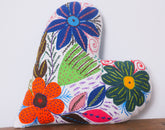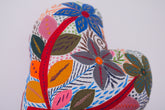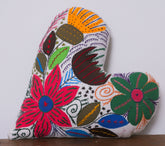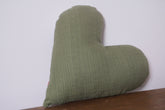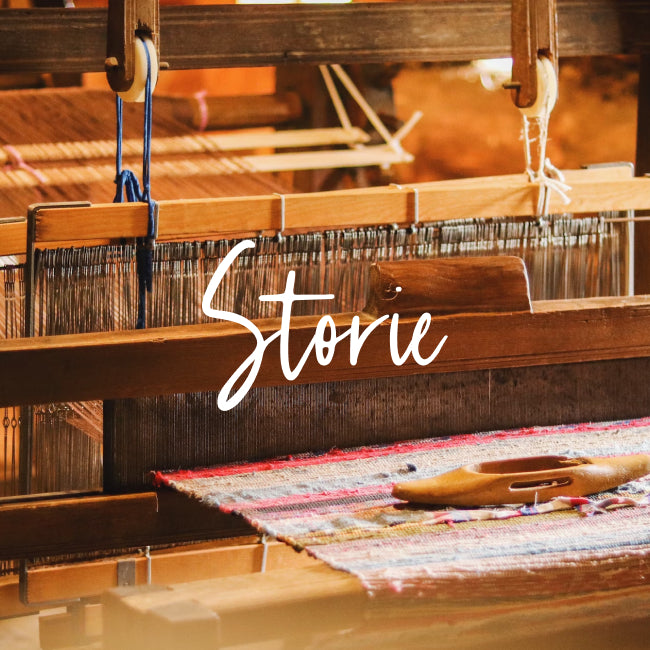CRAFTSTORY 11# HEARTWORKS, SOUTH AFRICA
The attraction of something handmade is the obvious human touch in an object; well made craft has some kind of soul.

This is certainly the case with all things by Heartworks, a group of women artisans set up in Cape Town in 2000 by Margaret Woermann, an artist in her own right who tells me good craft “transfers the dream and intent of the maker”.
Heartworks embroidery was created to train, and offer safe and stable work to marginalised women. The crafters here come from far and wide, the majority of the women that make up the group come from Zimbabwe, DRC but also from across South Africa. I asked Margaret how the organisation grew;
“Initially we started the project with an NGO that was an HIV awareness group called Breadline Africa group 17 years ago, they funded a course of embroidery for a group of 15 women.”

Amongst the earlier groups of women there were many from Zimbabwe, who had been already been taught to sew
“ embroidery and knitting was taught in schools in Zimbabwe, unlike here in South Africa. Some of these women were using stichting I’d never seen before, especially a stitch, which they called the worm. '' They were off to a good start. Margaret explained there was another fortuitous element in the development of their work, “embroidery artist Leonie Malherbe from Kwa Zulu Natal taught a group of the women in a comprehensive one week course.” The women took to this work easily, they have grown and developed new skills, and today “they’ve got the skill down. I’m really focused on the embroidery. We’re making really good things, and there is so much potential. We are at a cusp and I’m really excited about the future.”

Their work is impressive, contemporary craft at its best. Textiles for our homes, fit for a museum, I see the work almost as functional art. Among the most striking recent work is their new insect collection, Margaret explains the idea was been a long time in the making “Years and years ago we did some insects, with an incredible woman who was training to be a teacher. She travelled once a year from Harare to Cape town with a bag filled with interesting embroidery, amongst which, many very beautiful insects.” In the following year, she embroidered only insects.” they asked her to make lots, enough insects to sell throughout the year until she returned to Cape Town.
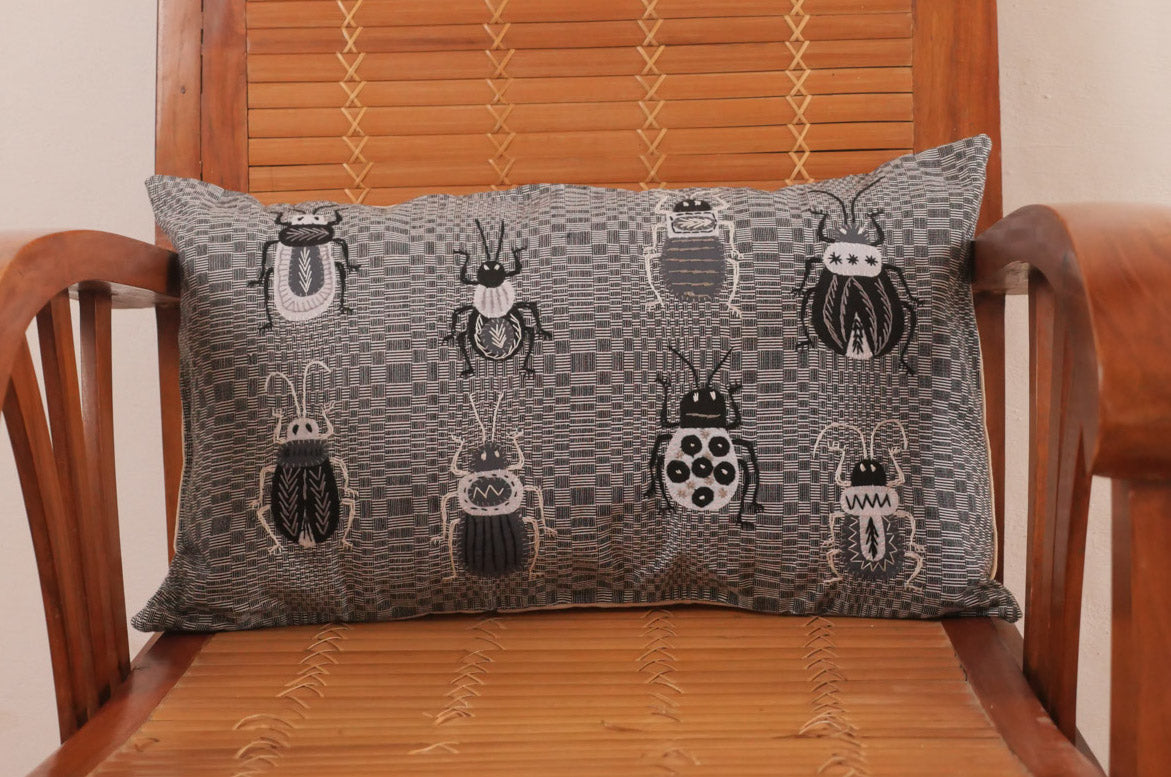 This is how many of the crafts women used to work, they travel to Cape Town to earn money, sometimes for several weeks or even months at a time, and “then return home to prepare the fields for the planting of maize.” The good thing about embroidery is that the women don’t have to work in a workshop, office, or factory, they can take the work home, and be around to look after their family if necessary; which means they also don’t have to travel miles and miles - which costs a lot of money and takes up a lot of their precious time.
This is how many of the crafts women used to work, they travel to Cape Town to earn money, sometimes for several weeks or even months at a time, and “then return home to prepare the fields for the planting of maize.” The good thing about embroidery is that the women don’t have to work in a workshop, office, or factory, they can take the work home, and be around to look after their family if necessary; which means they also don’t have to travel miles and miles - which costs a lot of money and takes up a lot of their precious time.  Amongst the group there are both economic migrants and political migrants; for years now Heartworks has supported and encouraged artisans who have come a long way for a safer future, and these women are seriously motivated, “ the further you walk - the harder you work.” If life wasn’t already challenging enough, the covid pandemic has pushed them to their limits, since covid “the group is very much reduced, from 30 regular workers pre pandemic , to 6 or 7 women today.” A lot of the craftswomen returned to their homes at the start of the pandemic: as the country was locked down, the looming prospect of losing a stable income meant people returned to their families, when times are difficult . As one of the ladies told Margaret: “ it’s easier to be poor at home”.
Amongst the group there are both economic migrants and political migrants; for years now Heartworks has supported and encouraged artisans who have come a long way for a safer future, and these women are seriously motivated, “ the further you walk - the harder you work.” If life wasn’t already challenging enough, the covid pandemic has pushed them to their limits, since covid “the group is very much reduced, from 30 regular workers pre pandemic , to 6 or 7 women today.” A lot of the craftswomen returned to their homes at the start of the pandemic: as the country was locked down, the looming prospect of losing a stable income meant people returned to their families, when times are difficult . As one of the ladies told Margaret: “ it’s easier to be poor at home”.

Troubled times mean they are having increasing problems with logistics and supply of fabrics and thread, but it seems that the ingenuity and grit of Margaret and the Heartworks team will not be held back by such pedestrian practicalities.
Heartworks took a direct hit from covid as communities around the world were locked down, shops shut, overseas orders diminished and sales came to a halt in their own Cape Town boutiques, “I lost all my outlets and my business.” But today Heartworks is getting busy again, they are currently training 3 or 4 new women and “we’ve learnt many lessons”. When I ask Margaret what the main challenges are for this group of talented women she says little limits their work, but the main problem is money, the work is long, painstaking and needs to be correctly remunerated, but she feels that the market doesn’t value such high quality craft enough “there is a problem with the perception that production and cost of living is cheap.” And so therefore so should be the craft.

A perception Storie has long worked to change. Despite all the economic challenges of our time, it does feel like the tide is turning. Today more and more people understand the value of hand made, let’s call it authentic luxury. A conscientious consumer is looking for an object which has been made in an sustainable and ethical fashion. They are looking for the story of the product and understand that by supporting companies doing good business they can play a role in changing the market, pushing forward fabulous organisations like Heartworks in the future.

Artisan profiles. “The lady who made your first protea cushions and the ones we are busy with at the moment: is called Angel Kalao – she came from the DRC about 18 years ago at the age of 23 – when she first arrived, she did not speak English – now she has learned the basic English, but is more fluent in Xhosa, our local language. After the birth of her 6th child, her husband left her. She embroiders very beautifully, and her daughters assist with the design of some of the story-telling cushions. She received some financial support from her brother, but somehow managed to raise her children on the proceeds of her embroidery – now the older daughters are employed and Angel can ‘take it a bit easy’ finally. But she still makes beautiful embroideries.
Another embroidery lady is Connie, she, together with her husband, used to sell used clothing in Harare. Now they sell duvets here in cape town. But Connie is our principal embroiderer, and somehow manages to juggle both these pursuits in order to send money home to her family and pay for her sons training to be a mechanic." Margaret Woermann
Sources
Interview with Margaret Woermann, June 2022
https://theconversation.com/how-covid-19-has-made-life-harder-for-south-african-women-169705




